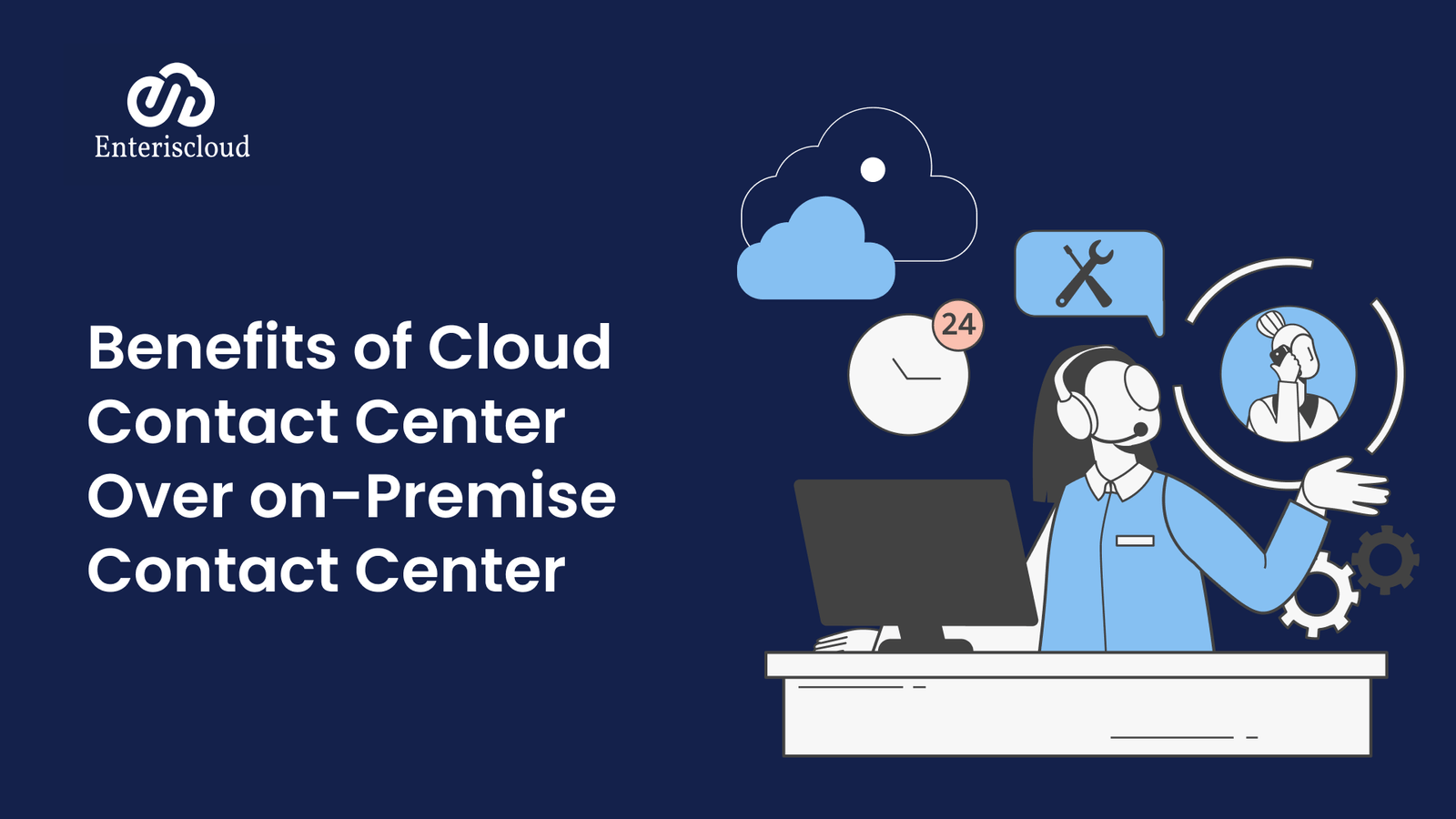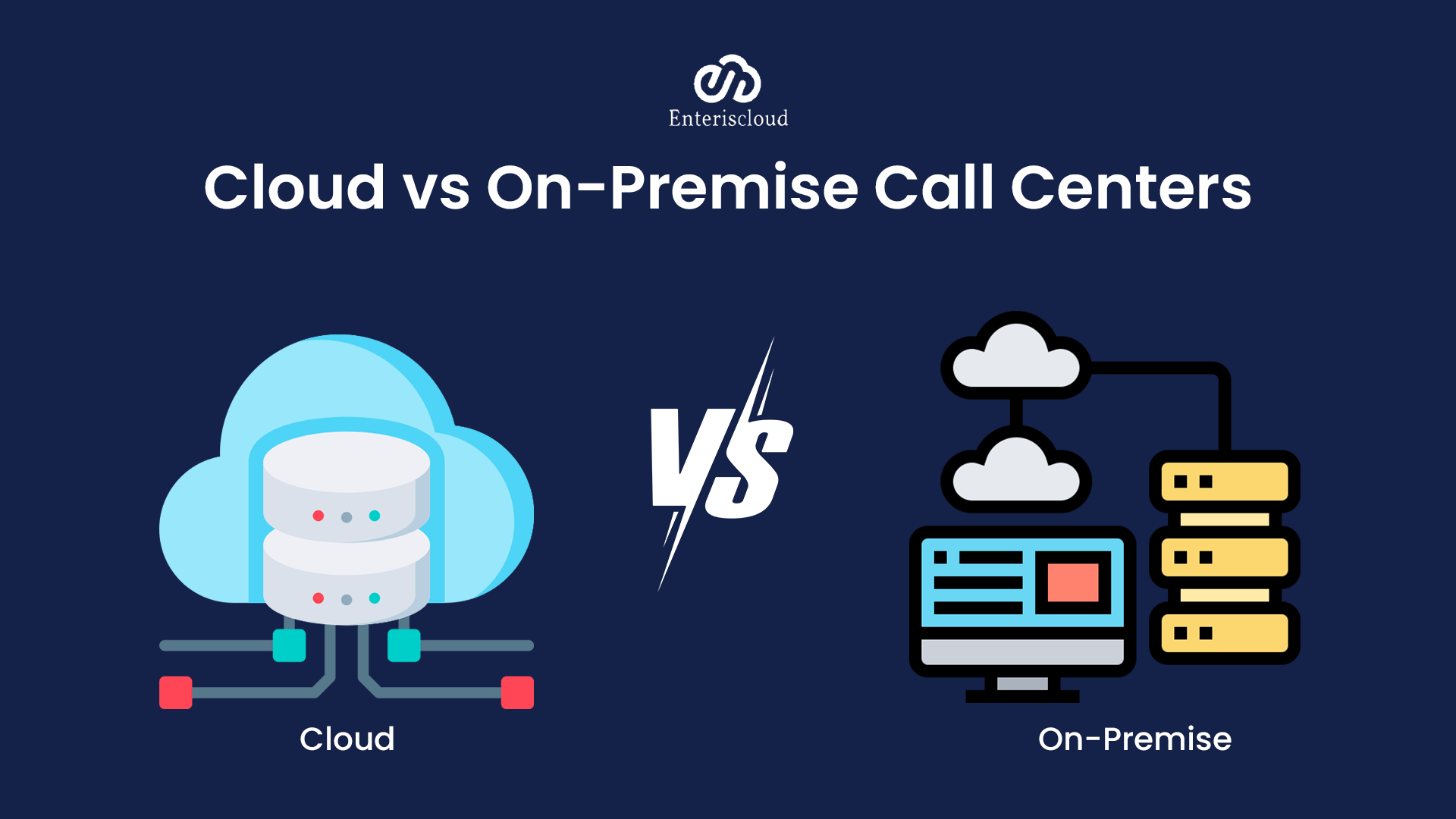A contact center is a crucial component of various businesses, providing a centralized hub for handling customer inquiries, support requests, and sales. There are two primary deployment models (on-premises and cloud-based) for the contact center. As technology has become more advanced, on premises contact centers are no longer in demand due to various concerns though cloud contact centers are becoming popular.
Differences Between The Two Types of Contact Centers
One of the major differences between these contact centers is the ownership and control of the infrastructure.
An on-premise contact center is usually installed in a company’s own data center or server room. So, the company’s IT staff manages, maintains, and installs all hardware and software required for proper functioning. The company owns and controls the infrastructure and is accountable for all aspects of its operation, supervision, and upkeep. They ensure all resources are properly implemented on site.
In contrast, a cloud contact center is hosted (deployed and managed) by a third-party provider and accessed over the Internet. The provider hosts the hardware and software necessary to run the contact center in a remote data center.

Cloud unified communications enable organizations to streamline communication processes, collaborate more effectively, and enhance productivity. With cloud UC, companies can enjoy a wide range of communication features, such as voice calls, video conferencing, instant messaging, presence management, and more – all from a unified interface that can be accessed from anywhere, at any time, on any device with a safe internet connection.
Examples:
Avaya, Genesys, and Cisco are some common examples of on premise contact center platforms, while Amazon Connect, Twilio, and Five9 are examples of cloud contact center providers.
Furthermore, American Express, Delta Airlines, and Best Buy have deployed on-premise contact centers, while companies such as Airbnb, Lyft, and Shopify have opted for cloud contact centers.
Advantages of Cloud Contact Center Over On-premise Contact Center
- Cost Effectiveness
There are numerous advantages of installing a cloud contact center instead of an on-premise contact center. Cost savings is one of the major and perhaps the most significant ones as it eliminates the investment cost of expensive hardware and software installations. Ultimately reducing the outlay of hiring additional staff because the provider manages the maintenance and upgrades. The customer only pays for their services.
No more investing in costly infrastructure upfront!
- Scalability and Flexibility
Cloud contact centers offer higher scalability and flexibility. It is much easier to scale up or down as needed because the 3rd-party manages the infrastructure. This helps companies swiftly adjust to changing business requirements and ensure that they only pay for the resources they need at any time.
For example, during peak periods, a company can quickly add additional agents or resources to handle augmented call volumes and then scale back down during sluggish periods.

- Ease of Access and Use
They are more accessible and available than on-premise contact centers for being hosted remotely. They can be accessed from anywhere with an internet connection and allow agents to work from home or in remote locations. Furthermore, cloud contact centers typically offer greater reliability and higher uptime as they are hosted in redundant data centers with multiple failover mechanisms. It means that even at the failure of hardware or software, the contact center can effortlessly and faster failover to another data center, guaranteeing minimized service interruptions.
- Security and Reliability
Last but not least, security and reliability are also significant advantages of cloud contact centers. Cloud providers typically have more resources and expertise for security and compliance than individual companies. They also guarantee that customer data is kept protected.
Cloud providers typically have more vigorous disaster recovery and business continuity plans. It gives the peace of mind that even in a major outage or disaster, the contact center can quickly and efficiently resume normal operations.
Harness Advanced Technologies of Cloud Contact Centers

Cloud contact centers offer advanced technologies and features that can future-proof your contact center operations, including:
- Artificial intelligence (AI) and machine learning capabilities for predictive analytics
- Chatbots for enhanced self-service options
- Omnichannel capabilities for seamless customer interactions across multiple channels
- Integrations with other business tools for improved productivity and efficiency
Cloud contact centers also provide regular updates and enhancements to keep up with the latest industry trends and customer expectations, making sure that your contact center stays modern and relevant in the ever-changing business landscape.
Final Thoughts
On premises contact centers have been the traditional choice for various businesses, while cloud contact centers are more in demand in this technological world. Cloud contact centers provide considerable advantages when it comes to cost savings, accessibility, scalability, and reliability. Businesses should carefully consider their business needs and evaluate the options to decide which type of contact center fits their organization best.



